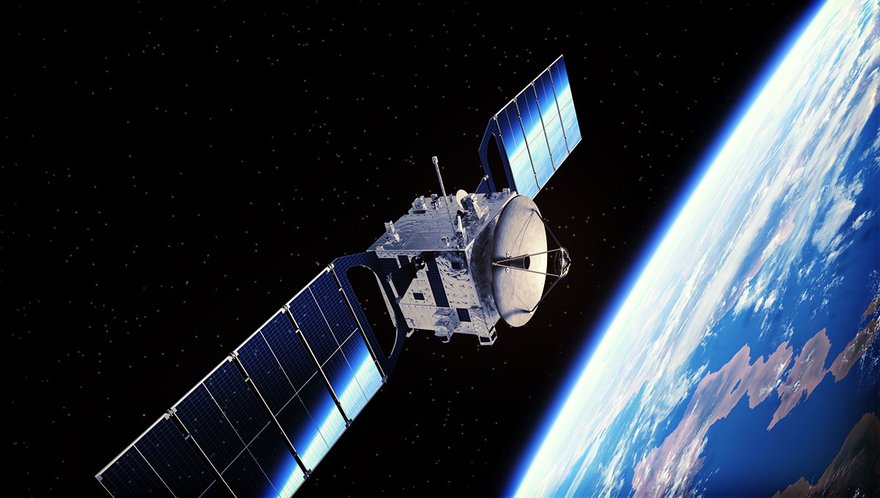In a major leap for space-based communications, China has announced a successful test of a laser-powered satellite internet system that reportedly delivered 1 Gbps speeds—five times faster than what Starlink typically offers.
While Elon Musk’s Starlink has become nearly synonymous with satellite broadband, this development introduces a compelling challenger in the rapidly evolving race for global connectivity.
China’s use of laser communications from a geostationary satellite (GEO) is not just a technological achievement—it may represent the future of satellite internet infrastructure, and a strategic pivot in global tech competition.
The Technology Behind the Breakthrough: AO-MDR
What Makes Laser Communication Different?
Unlike traditional radio frequency (RF) systems used by Starlink, China’s laser satellite utilizes optical communications, which can transmit more data with greater efficiency over long distances.
This allows for higher bandwidth, improved speed, and lower power consumption.
AO-MDR: Adaptive Optics Meets Mode Diversity Reception
The test employed a combination of Adaptive Optics (AO) and Mode Diversity Reception (MDR):
-
Adaptive Optics corrects for the distortion caused by Earth’s atmosphere by adjusting tiny mirrors in real time.
-
Mode Diversity Reception reassembles scattered light into usable data streams, rather than discarding it as interference.
This powerful duo—AO-MDR—was tested at the Lijiang Observatory using a 1.8-meter telescope with 357 micro-mirrors, successfully receiving a 1 Gbps downlink signal from a satellite in geostationary orbit (36,000 km above Earth) using just 2 watts of power.
Comparing China’s Laser System to Starlink
Starlink: Proven, But Limited by RF
Starlink uses a vast constellation of low Earth orbit (LEO) satellites (~550 km altitude), which minimizes latency and allows for global coverage.
However, its RF-based communication system typically maxes out at 100–200 Mbps per user, and each satellite must handle many users simultaneously.
China’s Laser Link: Higher Speed, Higher Orbit
In contrast, China’s system demonstrated speeds of 1 Gbps from a single laser beam, potentially enabling fewer satellites to serve high-throughput needs.
Operating from GEO also means fewer satellites are needed to achieve wide-area coverage, albeit with higher latency (unless mitigated with edge computing).
Key Advantages of Laser-Based Satellite Internet
-
Higher data capacity
-
Greater power efficiency
-
Reduced signal interference
-
Enhanced security against jamming and interception
Strategic Significance: The Bigger Picture
China’s laser breakthrough is not happening in a vacuum. It is part of a national strategy to compete directly with Starlink and shape the next era of global internet infrastructure.
The Constellation Race: Qianfan and Guowang
China is actively developing two major satellite constellations:
-
Qianfan (also called “Spacesail”): Backed by state-owned China Electronics Technology Group Corporation (CETC), aims to deploy 15,000 satellites, with at least 648 operational by the end of 2025.
-
Guowang: Managed by the state-owned China Satellite Network Group, plans to field around 13,000 satellites in LEO.
A Strategic Focus on Emerging Markets
China is targeting strategic partners across Africa, Southeast Asia, Latin America, and Central Asia, especially countries underserved by Western providers.
These satellite systems are aligned with China’s Belt and Road Initiative, integrating digital infrastructure with geopolitical ambitions.
Challenges and Limitations
Despite its promising speed and performance, China’s laser internet is not yet commercially viable. The recent test was ground-based and laboratory-controlled, requiring large telescopes and stable atmospheric conditions.
Technical Hurdles to Overcome
-
Miniaturization: AO-MDR systems must be scaled down for practical use in smaller, low-cost satellites.
-
Weather dependency: Laser signals can be disrupted by cloud cover and rain.
-
Launch logistics: China’s reusable rocket capacity is still developing compared to SpaceX’s proven Falcon 9 platform.
Reliability Concerns
Reports suggest that satellites in China’s early constellations have shown higher failure rates (~14%) compared to Starlink’s sub-1% failure rate. This highlights the need for robust testing and quality control before scaling.
Global Implications: A New Internet Ecosystem?
If China successfully integrates this laser communication technology into its upcoming satellite networks, it could:
-
Offer high-speed internet to underserved regions.
-
Create competition for Starlink and OneWeb in global markets.
-
Challenge U.S. dominance in the satellite broadband industry.
-
Raise cybersecurity and surveillance concerns among Western regulators.
The U.S. Federal Communications Commission (FCC) and European counterparts are already cautioning about increased reliance on foreign satellite internet providers, especially those with deep state ties.
Conclusion: Disruption in the Making
China’s laser satellite internet breakthrough marks a turning point in global space-based communication. Though still in its experimental stage, the potential to outperform Starlink in speed, efficiency, and security could have far-reaching consequences—technologically, economically, and geopolitically.
The true test will be scalability and implementation. If China manages to overcome the engineering and deployment hurdles, its laser-powered system may not just challenge Starlink—it could redefine the rules of the satellite internet game.
Also Read
Bitcoin Price Dips Under $100,000—Is This the Beginning of a Larger Correction?
Kroger to Close Charlottesville Grocery Store in August 2025, Sparking Community Concern

